
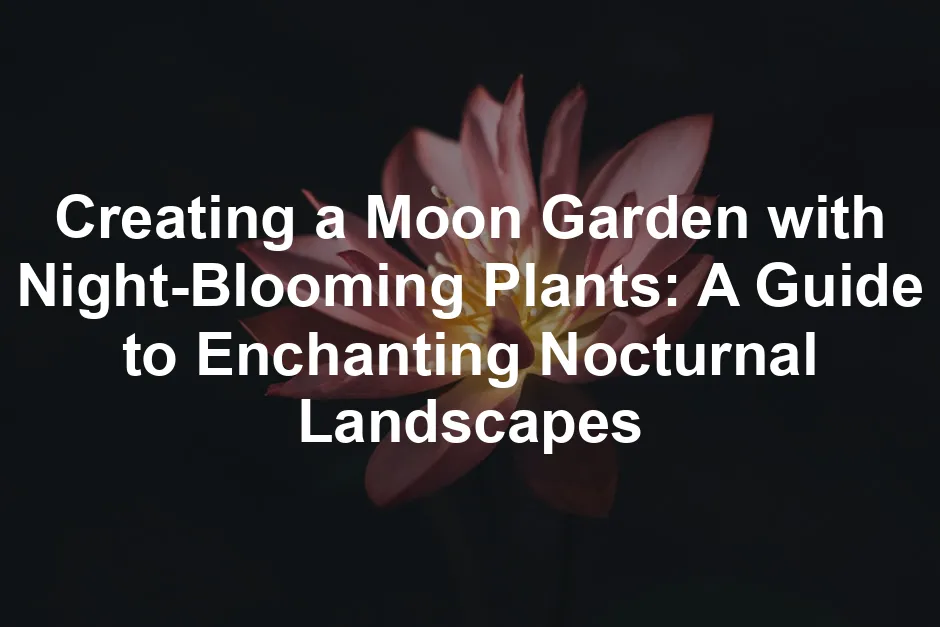
Creating a Moon Garden with Night-Blooming Plants: A Guide to Enchanting Nocturnal Landscapes
Introduction
In a world that often rushes by in the glaring light of day, the serenity of a moon garden invites us to pause and appreciate the beauty of the night. Imagine stepping into a garden that awakens under the silvery glow of the moon, where fragrant night-blooming plants whisper their secrets and invite nocturnal pollinators to dance amid their petals. Creating a moon garden isn’t merely about planting flowers; it’s about crafting an enchanting outdoor sanctuary that transforms your nights into magical experiences.
Picture this: you stroll through your moon garden, bathed in soft moonlight, surrounded by delicate blossoms and captivating scents. As the sun sets, the garden springs to life, revealing a whole new world of beauty that often goes unnoticed. Night-blooming plants, with their pale petals and intoxicating fragrances, become the stars of the show. They add a layer of charm that transforms your outdoor space into a serene retreat.
This guide will walk you through the steps to cultivate your own moonlit haven, filled with the beauty and mystery of night-blooming flora. Whether you have a sprawling backyard or a cozy balcony, the magic of a moon garden is within reach. You’ll learn how to select the best night-blooming plants, design a layout that enhances their beauty, and create an inviting atmosphere that draws you outside after dark.
So, grab your gardening gloves, and let’s embark on this adventure together. You’re just a few steps away from designing a space that not only captivates your senses but also provides a sanctuary for the enchanting creatures of the night. With the right plants and thoughtful design, your moon garden will become a cherished retreat, a place to unwind and connect with nature under the twinkling stars.
By the end of this article, you’ll be inspired to create your own enchanting outdoor oasis that thrives in the moonlight.

Creating Your Moon Garden
Choosing the Right Location
Creating a moon garden starts with choosing the perfect spot. You want a location that feels secluded. Think of a quiet nook away from the glare of streetlights. Light pollution can ruin the magic of moonlight. Your garden should be a sanctuary where nighttime beauty can thrive.
Now, let’s talk about sunlight. Even night-blooming plants need their daily dose of sun. Aim for a location that gets at least six hours of direct sunlight during the day. This will help your plants stay healthy and vibrant when night falls.
Accessibility is key too. You want your moon garden to be easy to reach. After all, who wants to stumble around in the dark? Consider pathways or seating that make it simple to enjoy your garden at night. Think about how it will feel to stroll through your moonlit oasis under a starry sky.
In summary, when selecting a location, prioritize seclusion, sufficient sunlight, and accessibility. Your moon garden will flourish in a thoughtfully chosen spot, allowing you to bask in its beauty after dark.

Key Elements of a Moon Garden
Light and Color
Light and color play a significant role in moon gardens. White flowers are the real stars here. They reflect moonlight beautifully, creating a luminous landscape. Consider planting seasonal favorites like Casablanca lilies or evening primrose. These blooms will shine under the moon’s glow, bringing your garden to life.
Don’t forget about reflective surfaces. Light-colored pots or furniture can amplify the enchanting atmosphere. A white bench or a shimmering trellis can capture the magical essence of moonlight. These elements enhance the overall visual appeal, making your garden a stunning sight at night.

Fragrance
Ah, the sweet scents of a moon garden! Fragrance is essential for nighttime enjoyment. Plants like night-blooming jasmine and gardenia release their intoxicating aromas after sunset. These fragrances attract nocturnal pollinators and create a delightful sensory experience.
Consider adding a variety of fragrant plants to your garden. Scented stock and honeysuckle are excellent choices. They will fill the air with delicious scents, making your moon garden a feast for the senses.
And speaking of delightful scents, why not enhance your experience with an Aromatherapy Diffuser? It can fill the air with calming scents, turning your moon garden into a tranquil escape.

Texture and Sound
Texture and sound elevate the ambiance of your moon garden. Incorporating water features, like a gentle fountain, can create soothing sounds. The trickling water will invite relaxation, making your garden a perfect retreat.
Wind chimes and ornamental grasses can add another layer of auditory delight. The soft rustling of leaves combined with tinkling chimes creates a symphony of sound. Together, these elements enhance the overall sensory experience, making your moon garden a magical escape from the everyday hustle and bustle.
To really set the mood, consider adding an Outdoor Garden Fountain. The gentle sound of flowing water can be incredibly soothing, creating a serene atmosphere perfect for late-night relaxation.
Incorporating these key elements will help you create a moon garden that captivates the senses. With the right plants, thoughtful design, and attention to detail, your moonlit sanctuary awaits!

Best Night-Blooming Plants for Your Moon Garden
Creating a moon garden is a delightful way to embrace the beauty of the night. Selecting the right plants is crucial. Here are some top picks and tips for crafting an enchanting nocturnal landscape.
Top Picks for White and Pale Flowers
1. Moonflower (Ipomoea alba)
This tropical vine is the superstar of moon gardens. Moonflowers boast large, white blooms that open in the evening. They emit a strong, lemony fragrance, making them irresistible to night pollinators. Plant them in well-drained soil and provide a trellis for support.
2. Evening Primrose (Oenothera biennis)
With bright yellow blooms that turn pale as they open, evening primrose adds a splash of color under the moonlight. These low-maintenance beauties thrive in full sun and attract moths with their sweet, citrus-like scent. You can find Evening Primrose Seeds to start your own!
3. Night-Blooming Jasmine (Cestrum nocturnum)
This shrub is a powerhouse of fragrance! Its small, tubular flowers emit a sweet aroma that fills the night air. Night-blooming jasmine prefers well-drained soil and can grow quite large, so give it ample space.
4. Casablanca Lily (Lilium ‘Casa Blanca’)
Known for their striking white blooms and sweet fragrance, these lilies are a fantastic addition. They bloom in late summer and thrive in full sun. Just be sure to keep the soil moist but not soggy. You can get Casablanca Lily Bulbs easily online!
5. Four O’Clocks (Mirabilis jalapa)
These charming flowers open in the late afternoon and come in various colors, including pale white. Their sweet scent attracts nighttime visitors. They’re low-maintenance and can thrive in poor soil, making them a gardener’s dream.
6. Queen of the Night (Epiphyllum oxypetalum)
This stunning cactus blooms for just one night each year, producing large, fragrant white flowers. It’s best grown in a pot with well-draining soil and indirect sunlight. Treat it with care, and you’ll be rewarded with a magical show.
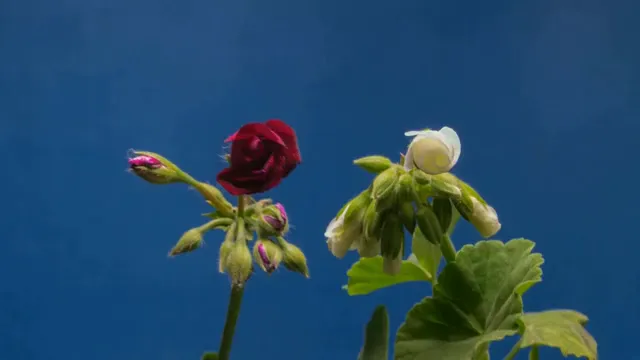
Integrating Fragrant Plants
Fragrance plays a key role in a moon garden. Here are some fragrant night-blooming plants to consider:
– Honeysuckle (Lonicera): Known for its sweet fragrance, honeysuckle attracts not just humans but also nocturnal pollinators. It can grow as a vine or shrub, providing versatility in your garden.
– Night-Scented Stock (Matthiola longipetala): These annuals bloom in late spring through fall. Their sweet, spicy aroma fills the air and draws in nighttime visitors. You can get Night-Scented Stock Seeds to grow your own!
– Gardenia (Gardenia jasminoides): With creamy white blooms, gardenias offer a luxurious scent. They thrive in well-drained, acidic soil and need plenty of sunlight.
Integrating these plants will entice moths and other pollinators while creating a delightful sensory experience.
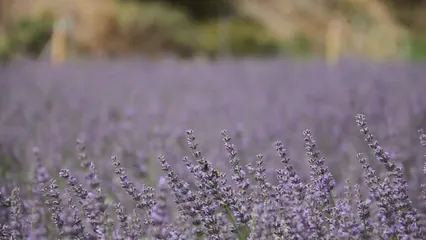
Highlighting Native Plants
Using native plants is vital for supporting local ecosystems. Here are a few excellent choices for your moon garden:
– Common Evening Primrose (Oenothera biennis): This native plant is not only beautiful but also beneficial for local wildlife. You can find Common Evening Primrose Seeds to plant!
– Mock Orange (Philadelphus coronarius): With its sweet, citrusy scent, this shrub blooms in late spring and early summer, attracting beneficial insects.
– Sweetbay Magnolia (Magnolia virginiana): This native tree offers fragrant blooms and lovely foliage, making it a perfect addition to any moon garden.
By incorporating native species, you’re creating a habitat that supports local pollinators while enhancing the beauty of your moon garden. Best native plants for attracting local wildlife
Incorporating native plants not only enhances the beauty of your moon garden but also supports local ecosystems. Learn more about the best native plants for attracting local wildlife.
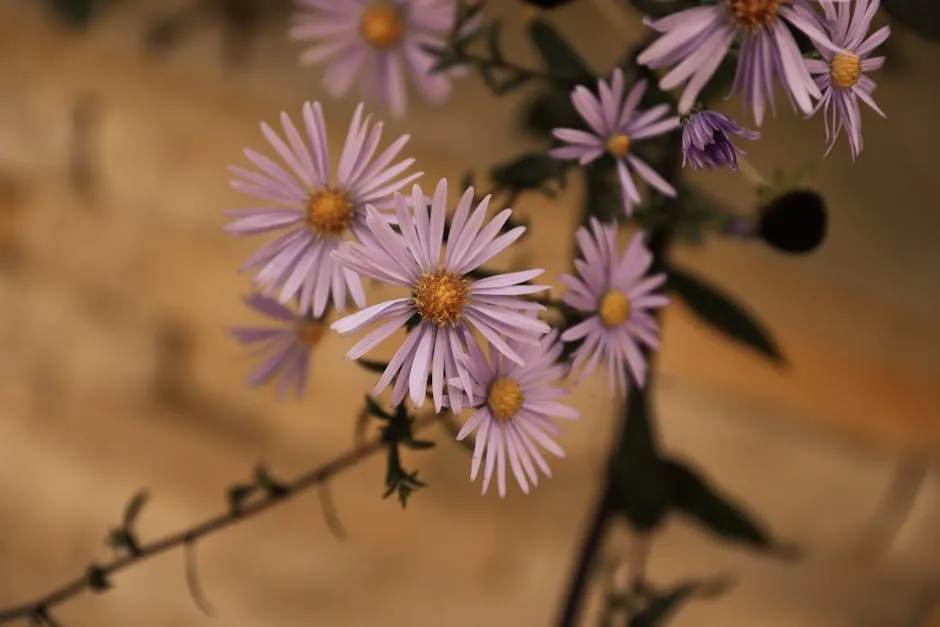
Seasonal Considerations
Year-Round Planning
Creating a moon garden isn’t just a one-time effort. Consider adjusting your plant selections and designs based on the seasons. In warmer months, tropical night-bloomers like the Queen of the Night thrive outdoors. However, in cooler climates, you may want to start these plants indoors before transferring them outside.
During winter, consider incorporating bulbs like paperwhite narcissus, which can thrive in glass vessels indoors. They’ll provide visual appeal and a delightful fragrance, reminding you of the garden’s magic even in the cold months.
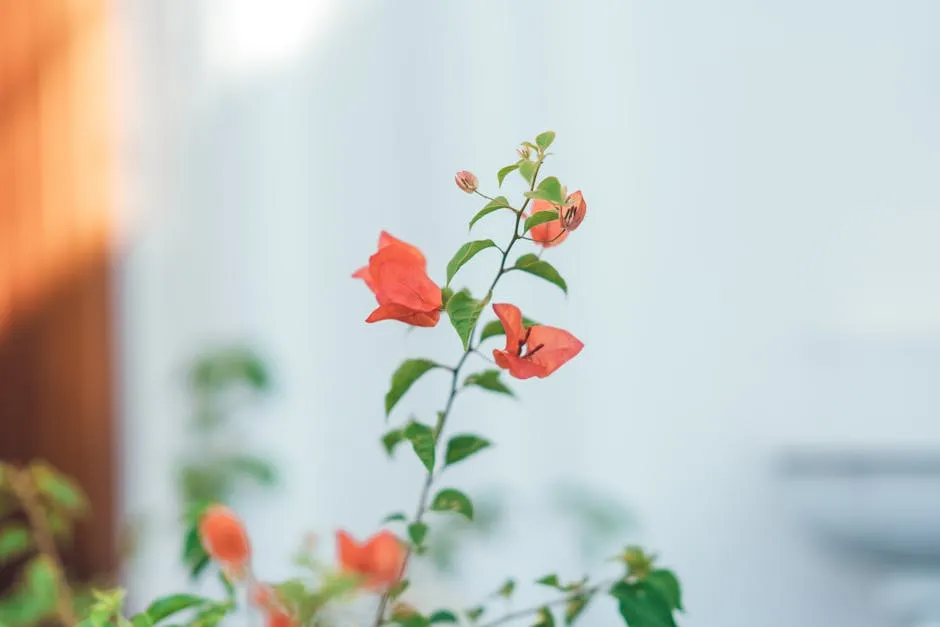
Indoor Moon Gardens
If winter has your outdoor space looking bare, fear not! You can create a stunning indoor moon garden. Choose potted varieties of night-blooming plants such as night phlox or jasmine. Place them near windows for adequate light during the day. Add decorative elements like lanterns or fairy lights to enhance the magical atmosphere.
Indoor moon gardens can be a perfect way to enjoy the serenity of night-bloomers all year round, providing a cozy escape from the hustle and bustle of daily life.
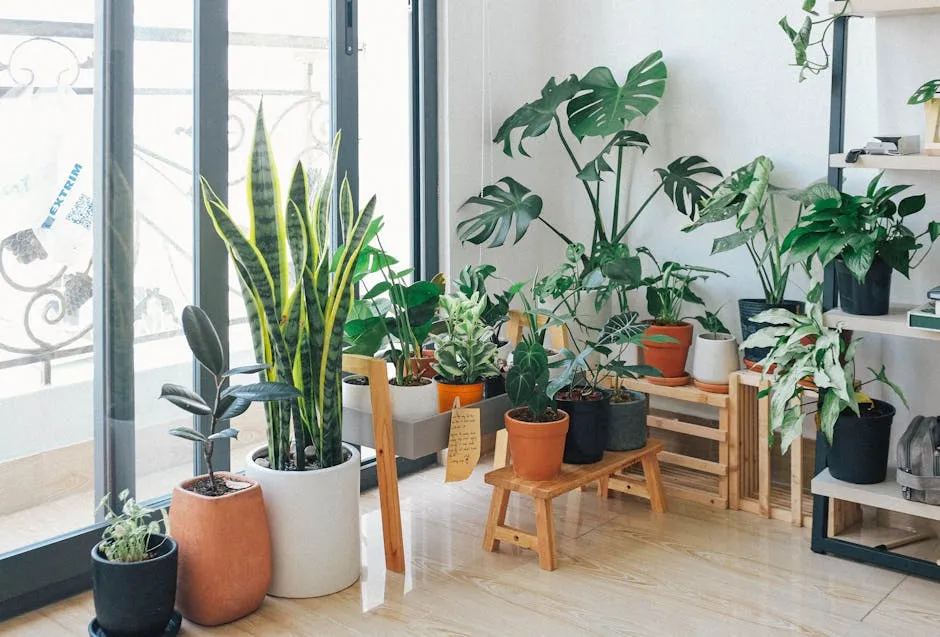
Designing Your Moon Garden
Layout Ideas
When designing your moon garden, consider the layout for visual impact and fragrance. Group plants with similar blooming times together to create a stunning display. Use pathways lined with reflective materials to guide visitors through your garden, inviting them to explore the beauty of the night.

Creating Cozy Spaces
Incorporate seating areas for relaxation. A small bench or a cozy nook surrounded by fragrant plants will encourage visitors to linger. Add decorative elements like wind chimes or water features to enhance the sensory experience, filling the night air with soothing sounds.
By thoughtfully designing your moon garden, you’ll create an enchanting space that captivates the senses and encourages nighttime enjoyment. With the right plants and design elements, your moon garden will be a cherished retreat, inviting all who enter to bask in the magic of the night.
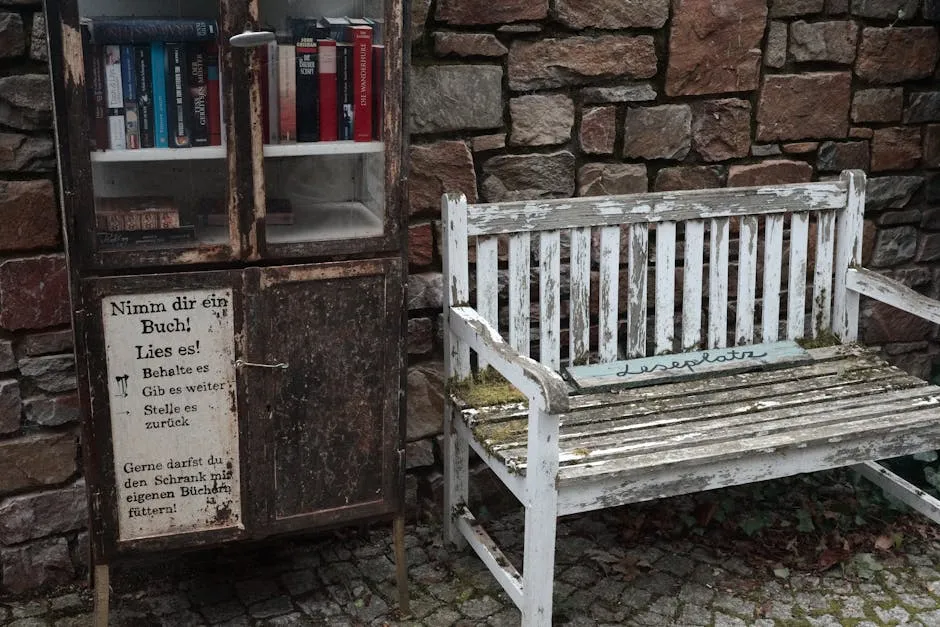
Enhancing the Nighttime Atmosphere
Lighting Options
Lighting is the magic wand that casts a spell over your garden at night. Choose ambient lights, lanterns, and candles to create a serene and inviting environment.
Start with soft white fairy lights draped across trees or along pathways. These twinkling lights mimic stars, guiding your guests as they wander through your moonlit sanctuary. Lanterns, whether hanging or placed on tables, add a rustic touch. Opt for LED candles for a safer alternative, casting a warm glow without the worry of wax drips.
For an ethereal feel, consider solar-powered garden lights. They charge during the day and illuminate walkways or flower beds at night, creating a pathway of light. Position them strategically to highlight your night-blooming plants.
Don’t forget about the playful flicker of candles! Use them in glass holders or lanterns to create a cozy atmosphere. Their soft glow will invite you to linger longer, perhaps with a cup of tea or a good book.
Experiment with different light sources to find the perfect balance. The goal is to create an enchanting ambiance while ensuring your moon garden remains a haven of tranquility.
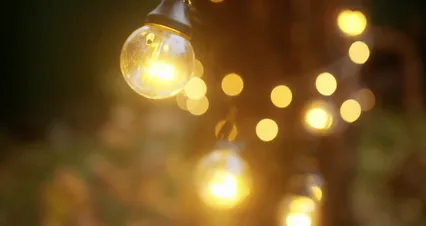
Reflective Decor
Incorporating reflective decor can enhance the magical experience of your moon garden. Gazing balls, mirrors, and other reflective materials can multiply the beauty of moonlight.
Start by placing decorative mirrors strategically among your plants. They can reflect the shimmering light, making your garden appear larger and more dynamic. A well-placed mirror can also reflect the moon, creating a stunning focal point. Choose designs that complement your garden style, whether modern or classic.
Gazing balls are another fantastic addition. These spherical decorations come in various colors and sizes, but opt for silver or clear varieties for a moonlit effect. Position them among your flowers to reflect the blooms and the night sky. You can find beautiful gazing balls to enhance your garden.
You could even use metallic finishes for planters and garden furniture. They will catch the moonlight, creating a shimmering effect that enhances the overall atmosphere.
Textured stones or glass aggregates can also be used to create pathways. As you walk, they will catch the light, making every step a bit more magical.
By combining thoughtful lighting with reflective decor, you can create an enchanting nighttime atmosphere that invites you and your guests to enjoy the wonders of your moon garden. As the night unfolds, your garden will shine brightly, a true celebration of nature’s beauty under the stars.

Conclusion
Creating a moon garden is about embracing the beauty of the night and crafting a space that invites tranquility and wonder. By carefully selecting the right plants, incorporating thoughtful design elements, and fostering a habitat for nocturnal pollinators, you can transform your outdoor space into a magical retreat.
Whether you choose to relax with a book under the stars or host enchanting evenings with friends, your moon garden will provide a unique escape from the chaos of everyday life. It becomes a personal sanctuary where you can unwind, reflect, and connect with nature.
Imagine sipping herbal tea as the moon casts its glow, while the delicate fragrance of night-blooming flowers fills the air. You may find yourself captivated by the gentle sounds of nature, as moths flutter about, drawn to the blooms you’ve thoughtfully chosen.
Each element within your moon garden plays a role in creating this serene environment. From the soft glow of ambient lights to the enchanting sounds of a nearby water feature, every aspect contributes to a holistic experience.
So, gather your favorite night-blooming plants, select your lighting options, and add that special reflective decor. With these elements, your moon garden will become a cherished space, inviting you to experience the magic of the night time and time again. Transform your evenings into moments of wonder as you indulge in the tranquil beauty of your own moonlit oasis.
FAQs
What plants are best for a moon garden?
Creating a moon garden is all about choosing the right night-blooming plants. Here are some top contenders to help you design your nighttime oasis: 1. Moonflower (Ipomoea alba) This vine is a must-have! Moonflowers boast large, white blooms that open at night, releasing a strong, lemony fragrance that draws in pollinators. They thrive in well-drained soil and need a trellis for support. 2. Evening Primrose (Oenothera biennis) These lovely plants feature bright yellow flowers that turn pale as they open. They attract moths with their sweet, citrus-like scent and prefer full sun and well-drained soil. 3. Night-Blooming Jasmine (Cestrum nocturnum) This shrub is a fragrant powerhouse! Its small, tubular flowers emit a sweet aroma at night. Night-blooming jasmine grows well in full sun and requires regular watering and pruning. 4. Casablanca Lily (Lilium ‘Casa Blanca’) Known for their striking white flowers, these lilies bloom at night and fill the air with a sweet scent. They thrive in full sun and need moist, well-drained soil. 5. Four O’Clocks (Mirabilis jalapa) These charming flowers open in the late afternoon and come in various colors, including white. Their sweet fragrance attracts nighttime visitors, and they thrive in poor soil. 6. Queen of the Night (Epiphyllum oxypetalum) This cactus is a showstopper! It blooms only once a year, producing large, fragrant flowers that open at dusk. It prefers indirect sunlight and well-drained soil. 7. Mock Orange (Philadelphus coronarius) With a delightful citrus fragrance, this shrub blooms in late spring. It can reach up to 12 feet tall, so give it plenty of space. These plants not only add beauty to your moon garden but also enhance its nocturnal charm. Choose varieties that suit your local climate, and enjoy the enchanting experience they provide.
How do I care for my moon garden?
Caring for a moon garden requires attention to several maintenance tasks. Here’s how to keep your nighttime haven thriving: – Watering: Ensure your plants receive consistent moisture, especially during flowering. Use a soaker hose or drip irrigation for even distribution. – Pruning: Regularly prune your plants to maintain their shape and promote healthy growth. Remove any dead or damaged branches to encourage new blooms. – Deadheading: Remove spent flowers to encourage reblooming. This is particularly important for flowering plants that tend to be heavy feeders. – Fertilizing: Use a balanced fertilizer during the growing season to support healthy growth. Annuals and perennials may require different nutrient levels, so read the labels carefully. – Mulching: Apply a layer of mulch around your plants. This helps retain moisture, suppresses weeds, and provides insulation against temperature fluctuations. By following these maintenance tips, your moon garden will flourish, allowing you to enjoy its beauty night after night.
Can I create a moon garden in a small space?
Absolutely! You can create a stunning moon garden, even in a small space. Here are some ideas for container gardening and small-scale moon gardens: – Containers: Use pots and containers to grow your favorite night-blooming plants. Opt for light-colored or metallic pots to reflect moonlight and enhance the magical atmosphere. – Vertical Gardening: Take advantage of vertical space by using trellises or wall planters. Vining plants like moonflowers can climb up structures, making them ideal for small areas. – Balcony Gardens: If you have a balcony, create a cozy moon garden with potted plants. Add seating and decorative elements like lanterns to enhance the ambiance. – Window Boxes: Install window boxes filled with fragrant night-blooming plants. The scent will waft into your home, creating a delightful indoor atmosphere at night. – Layering: Choose plants of varying heights to add depth. Taller plants like night-blooming jasmine can be placed behind shorter varieties, creating a lush, layered effect. With creative planning, your moon garden can thrive in even the smallest of spaces, allowing you to enjoy its beauty and charm.
What are the benefits of a moon garden?
Creating a moon garden offers several ecological and personal benefits: – Attracting Pollinators: Night-blooming plants draw in nocturnal pollinators like moths and bats. These creatures play a crucial role in pollinating flowers, contributing to a healthy ecosystem. – Promoting Relaxation: A moon garden provides a serene space for relaxation and reflection. The soothing scents of night-blooming plants can help reduce stress and promote better sleep. – Enhancing Biodiversity: By planting a variety of night-blooming plants, you contribute to local biodiversity. This helps create a balanced ecosystem that supports various wildlife. – Stargazing Opportunities: A moon garden invites you to spend more time outdoors at night, enjoying the beauty of the stars and moon. It’s a perfect setting for stargazing and connecting with nature. – Aesthetic Appeal: The enchanting beauty of a moon garden transforms your outdoor space into a magical retreat. The soft glow of moonlight reflecting off white flowers creates a captivating atmosphere. These benefits make creating a moon garden a rewarding experience that enhances your connection to nature and promotes a peaceful environment.
How can I attract nocturnal pollinators to my garden?
Attracting nocturnal pollinators to your moon garden is easier than you think! Here are some tips for creating an inviting environment for bats, moths, and other nighttime creatures: 1. Choose the Right Plants: Select night-blooming plants with fragrant flowers that open in the evening. Moonflower, evening primrose, and night-blooming jasmine are excellent choices. 2. Plant in Clusters: Group plants together to create a concentrated source of fragrance and nectar. This makes it easier for pollinators to find food. 3. Provide Water Sources: Set up shallow water dishes or small fountains to provide drinking water for pollinators. Make sure to keep the water fresh and clean. 4. Create Shelter: Leave some areas of your garden undisturbed with foliage and ground cover where pollinators can rest and hide from predators. 5. Limit Light Pollution: Keep artificial lighting to a minimum. Bright lights can deter nocturnal pollinators, so consider using soft, ambient lighting instead. By implementing these tips, you’ll create a welcoming environment that attracts nocturnal pollinators, enhancing the beauty and biodiversity of your moon garden.
Please let us know what you think about our content by leaving a comment down below!
Thank you for reading till here 🙂
All images from Pexels



